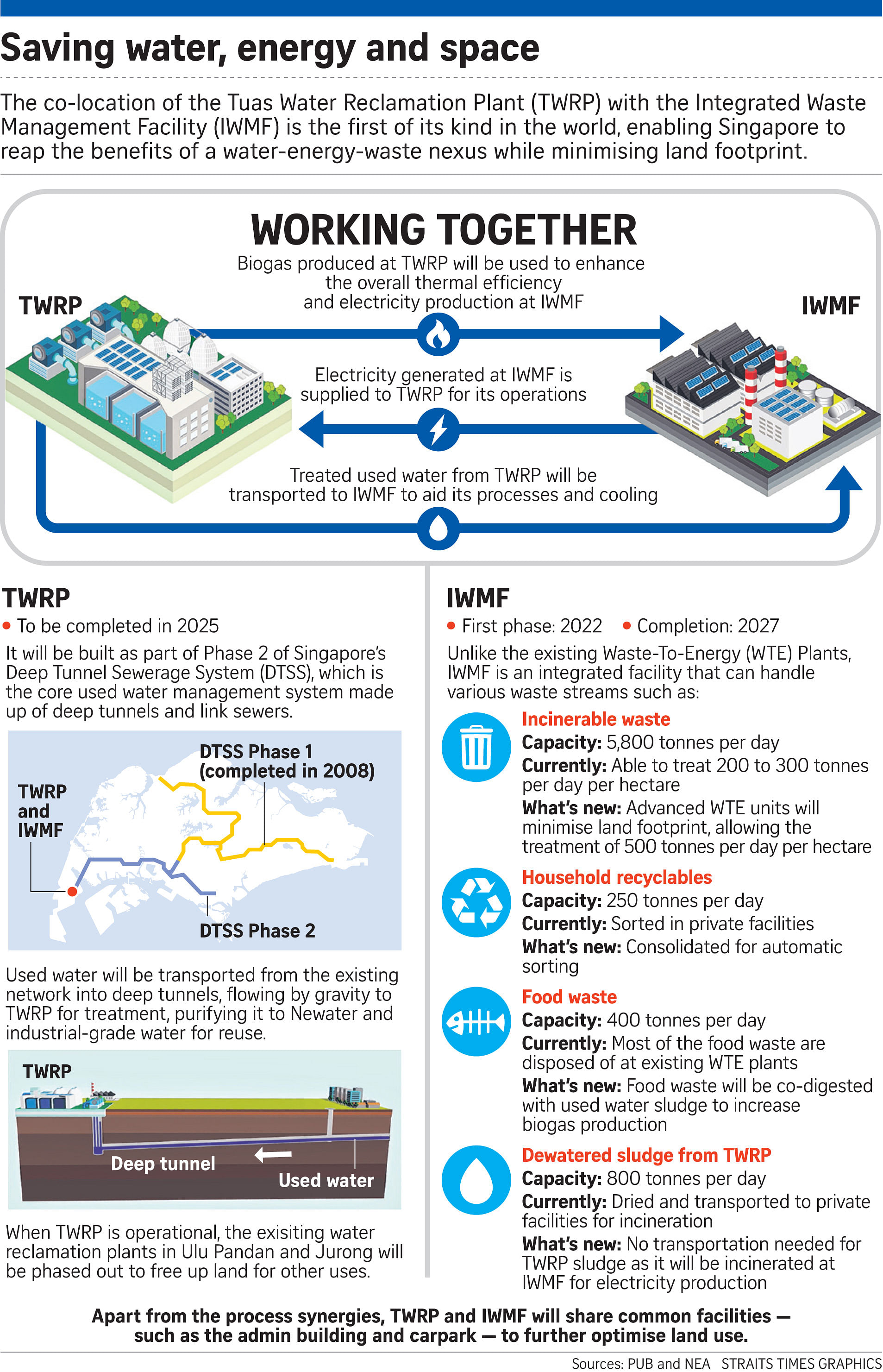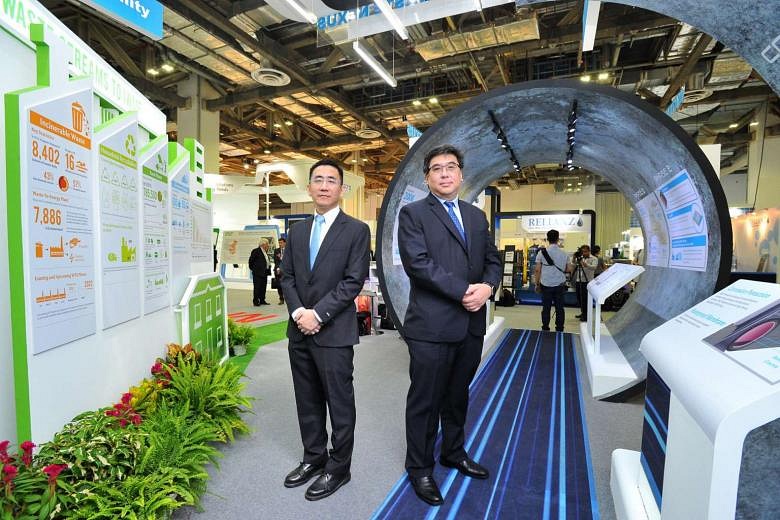Two giant facilities, to be built side by side, will take Singapore's treatment of waste water and solid waste to new levels of efficiency.
Each will supply resources to run the other and, between them, the two plants in Tuas will be able to treat 40 per cent of Singapore's waste by 2027.
The Tuas Water Reclamation Plant (TWRP) and the Integrated Waste Management Facility (IWMF) will complement each other in such a way that they will be completely energy self-sufficient.
For example, energy generated at the waste facility through the incineration of trash will be supplied to the water treatment plant.
In return, treated water from the water treatment plant will be piped to the waste facility for cooling purposes, for instance.

Food waste and used water sludge will also be co-digested, through a process called anaerobic digestion where micro-organisms convert waste into biogas, which will increase the biogas yield.
The project, which will include the construction of an integrated Newater factory at TWRP, is estimated to cost $9.5 billion in total, and will be the first of its kind in the world.
Details of the two facilities, and upcoming tenders for their design and construction, were announced yesterday by national water agency PUB and the National Environment Agency (NEA).
Mr Joseph Boey of the NEA and project director of IWMF said the co-location of the facilities "marks a new chapter in the way used water and solid waste are managed in land-scarce Singapore".
Together, they can reduce the environmental and land footprint, and maximise the energy recovered from the treated waste, he said.
In fact, the IWMF will produce 1,980,000MWh of energy a year, enough to power more than 400,000 four-room flats.
Only 10 per cent will be retained to operate the two plants, with the rest exported to the grid.
It will also be the first here to process four types of waste: incinerable waste, household recyclables, food waste and dewatered sludge, which are generally treated separately.
Using advanced technologies that minimise the amount of land required, the plant will be able to treat 500 tonnes of waste that can be incinerated per day per hectare, almost double that of existing waste-to-energy facilities.
The energy that can be derived from each tonne of waste will also be 6 per cent to 8 per cent higher.
The first phase of its development will be completed by 2022, and the whole facility is expected to be ready by early 2027.
Mr Yong Wei Hin, director of the Deep Tunnel Sewerage System (DTSS) Phase 2 at PUB, said the co-location of the pair will save 2.8ha of land. According to preliminary studies, it would also save the Government a couple of hundred million dollars, he added.
The PUB plans to implement "new and tested" water treatment technologies at TWRP, which will allow it to produce less sludge and double its energy recovery while consuming less energy than conventional plants.
The Tuas plant, which can treat 800,000 cubic m of water a day, will also be able to treat both domestic and industrial used water separately, turning them into Newater and water for industrial use respectively.
It is an integral part of the second phase of the DTSS that, when completed in 2025, will use gravity to channel used water in the western parts of the island to the plant through deep tunnel sewers.
The entire DTSS is meant to be a superhighway to transport used water from across the country to three coastal water reclamation plants in Changi, Kranji and Tuas.
This will halve the land used to house water infrastructure from 300ha in the 1990s to 150ha.

